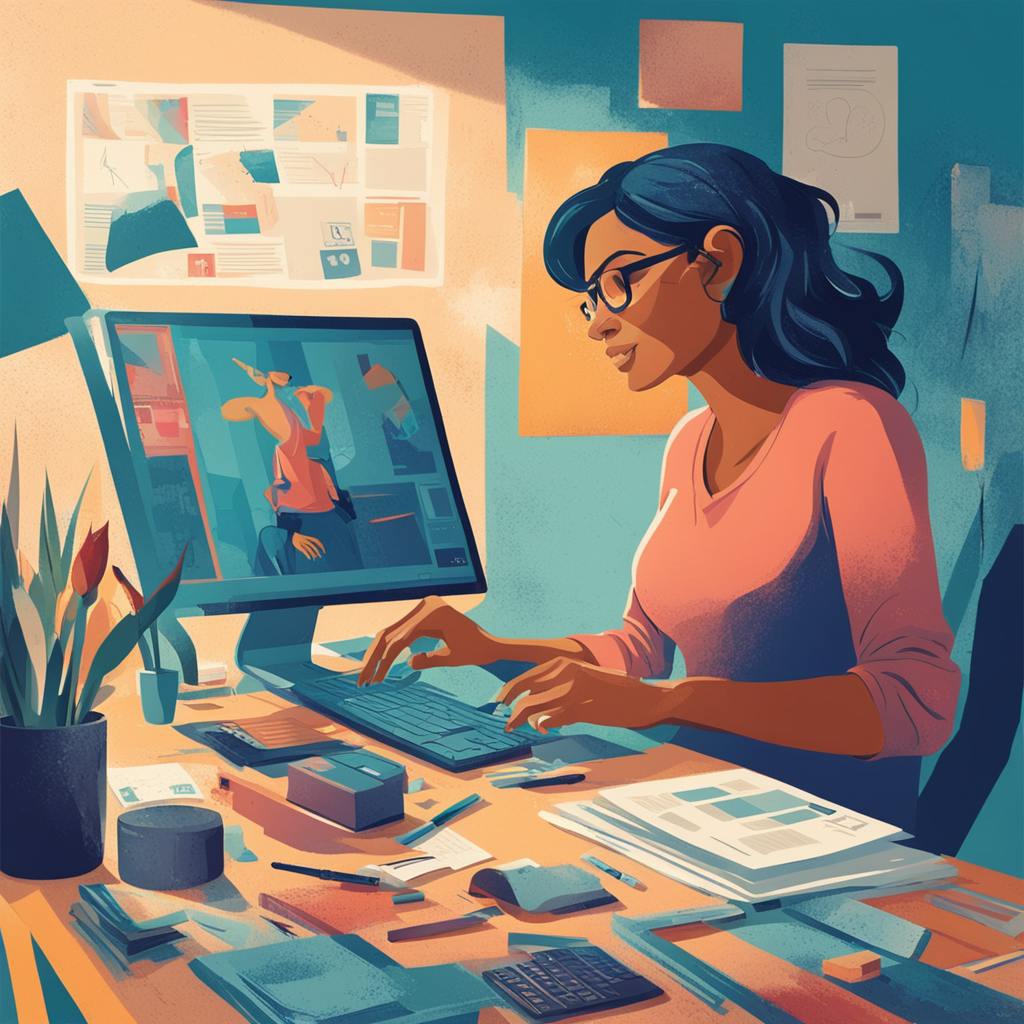In the vibrant and ever-evolving landscape of digital design, freelance designers are emerging as masters of their own creative destinies. The internet, with its boundless potential, offers freelancers the opportunity to showcase their artistic flair while simultaneously building a lucrative business. This article will delve into the effective strategies required to transform a freelance designer's website into a thriving digital enterprise. We'll explore the intersection of creativity and commerce, and guide you through the nuanced process of creating a compelling online presence that resonates with your audience.
How to Build Profitable Freelance Designers Websites
In today's tech-driven society, the role of a freelance designer has far exceeded the traditional realms of design. These creative professionals have carved out a niche within the digital space that is uniquely their own. The journey from crafting simple design concepts to developing comprehensive websites is both challenging and rewarding. The modern freelance designer is not just an artist but also an entrepreneur and a marketer. They must navigate the complexities of digital marketing, user experience, and client engagement to create a site that is not only aesthetically pleasing but also financially rewarding.
1. Balancing Creativity and Business
Freelance designer websites blend artistic expression with practical business strategy. They are both a canvas for creativity and a storefront for professional services. To be effective, your site needs to strike a balance between showing your personality and clearly presenting what you offer.
Your website should function as a polished digital portfolio. It’s the space where you showcase your creative style through a carefully selected collection of your best work. A strong portfolio instantly gives potential clients a sense of your aesthetic and skills.
But more than just visuals, your portfolio should tell a story. Including case studies that walk through your design process, highlight specific challenges, and show measurable outcomes helps clients see the value you provide. This approach demonstrates not only your creativity but also your ability to solve problems and deliver results.

AI made with Dean Jones
2. Enhancing User Engagement
Graphic design freelance websites come with their own unique challenges. They shouldn't just serve as online portfolios; they need to actively guide visitors toward becoming clients. To boost engagement, consider adding interactive features. These could include a dynamic gallery that shows each stage of your design process or quizzes that help visitors figure out what design services they need. These elements make your site more engaging and can lead to better conversion rates.
Marketing is a major factor in the success of any freelance designer's website. The key is to really understand your target audience and create content that speaks directly to them. Your website should offer valuable and engaging material such as blog posts on design trends or detailed tutorials that highlight your expertise. This kind of content not only draws people in but also keeps them coming back for more.
Social media can also play a big role in boosting your site’s visibility. Platforms like Instagram, LinkedIn, or Twitter aren't just places to post your work. They are tools for building relationships. By regularly sharing updates, client testimonials, and behind-the-scenes looks at your creative process, you create a consistent presence that helps connect with your audience and generate leads.
3. Specializing in Services
The mantra "Turn your passion into profession, thrive with freelance" encourages designers to infuse their personality into the services they offer. A key part of this is identifying a niche within the design industry that matches your interests and strengths. Whether it’s logo design, web design, or UX/UI, finding a specific focus can help you stand out.
Specializing in one area helps you attract clients who are actively looking for that specific expertise. It’s a way to position yourself as the go-to professional in a targeted space, rather than competing broadly with every other designer.
This focus often leads to higher profitability. Clients value specialists and are usually willing to pay more for niche skills and high-quality results. Over time, specialization builds your reputation and increases the chances of getting referrals and repeat business.

AI made with Dean Jones
FAQ: Building a Profitable Website as a Freelance Designer
1. What should I include on my freelance design website?
Focus on a strong portfolio, clear service offerings, case studies, and engaging content like blog posts or tutorials. These elements show your expertise and help convert visitors into clients.
2. How can I attract more clients through my website?
Use interactive features like project galleries or quizzes, specialize in a niche, and regularly update your site with valuable content. These strategies help keep visitors engaged and build trust.
3. Is social media really necessary?
Yes. Social media boosts visibility and helps you connect with your audience. Sharing behind-the-scenes content, testimonials, and new projects keeps your brand active and relatable.
Key Strategies
In conclusion, it is clear that freelance designers' websites and freelance design websites can be cultivated into profitable ventures. This requires an intricate blend of creativity, user-centric design, marketing acumen, and an understanding of clients' needs. Above all, turning passion into a profession and thriving as a freelance designer is about expressing one’s individuality, connecting with the audience, and providing value. By following these strategic steps, you can transform your website into a powerful tool that not only showcases your talents but also drives your business forward.
Building a profitable website as a freelance designer is no small feat as it involves a delicate balance of aesthetics, professionalism, and market understanding. Nevertheless, with effective marketing, focusing on specialized services, and consistent refinement of user experience, freelancers can successfully make their websites lucrative business platforms. The digital world is vast and full of opportunities; with the right approach, your creative vision can become a thriving digital enterprise.
To recap key strategies highlighted in this article:
- Freelance designer websites should balance creative expression with professional services.
- Graphic design freelance websites should focus on driving user engagement and guiding visitors towards availing services.
- Effective marketing strategies, including industry blog updates and social media integration, can increase visibility.
- The mantra "Turn your passion into a profession to thrive with freelance" can be embodied through offering specialized services.
- Crucially, understanding the target audience and tailoring services to them will keep a freelance designer’s website profitable.

